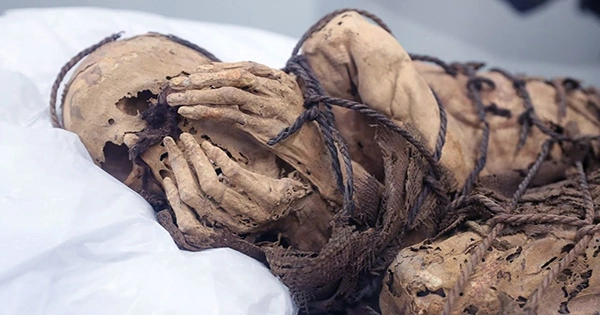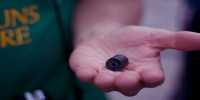This superbly preserved mummy, bound by ropes and looking to be in agony, sheds information on the lives and death of societies that previously thrived along Peru’s rugged coast. Researchers from the National University of San Marcos discovered the presumably tortured remains in November of last year at the Cajamarquilla archaeological complex on the outskirts of Lima, Peru.
According to the university, the mummy is between 1,200 and 800 years old, indicating that it was discovered during a time when the settlement was a thriving hive of trade between coastal and mountain settlements during the late pre-Hispanic period.
According to their findings, this person was a person who died between the ages of 18 and 22. They believe this was a person of quite high social position or perhaps a merchant because they were buried in the center of where the plaza formerly existed. The remains were discovered with ropes tied around their bodies, huddled in a fetal posture with their hands covering their faces, and in amazingly good condition. They were buried with the skeletons of a guinea pig and a dog in an underground cone-shaped funerary structure that measured about 3 meters (10 feet) in length and 1.4 meters (4.5 feet) in depth.
While this burial may appear gruesome to modern eyes, archaeologists working on the project say it is common in pre-Incan mountain tribes in present-day southern Peru. However, there were a few shocks. Van Dalen, Pieter Luna, one of the excavation’s leading archaeologists, told CNN that they uncovered several sea mollusks outside the mummy’s tomb, which was surprising given the site’s location, which is around 25 kilometers (15 miles) from the ocean. There were also llama bones, which are a frequent mammal in Andean cultures.
They believe this is due to the continuing nature of pre-Incan funerary rites, in which bodies were not just buried and forgotten, but were part of a long-term ritual. “There are constant occurrences and actions after the body is deposited in the tomb,” Van Dalen Luna explained. “That is to say, over time, their ancestors have returned and left food and offerings, including mollusks.” “The discovery of this resident gives new information on pre-Hispanic connections and relationships,” he noted.
















